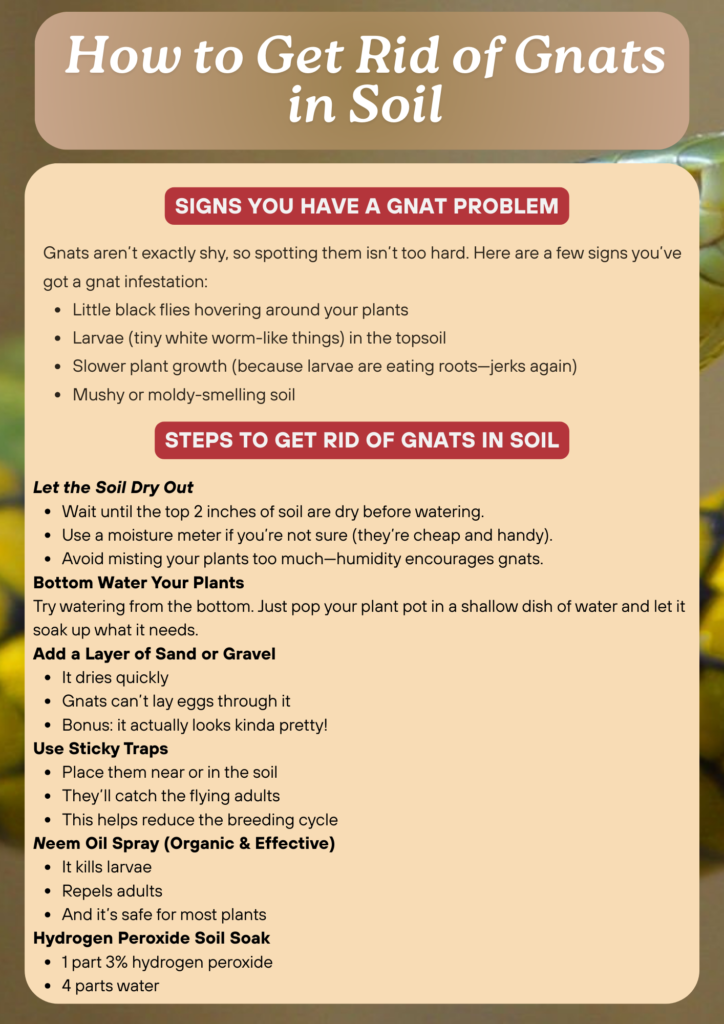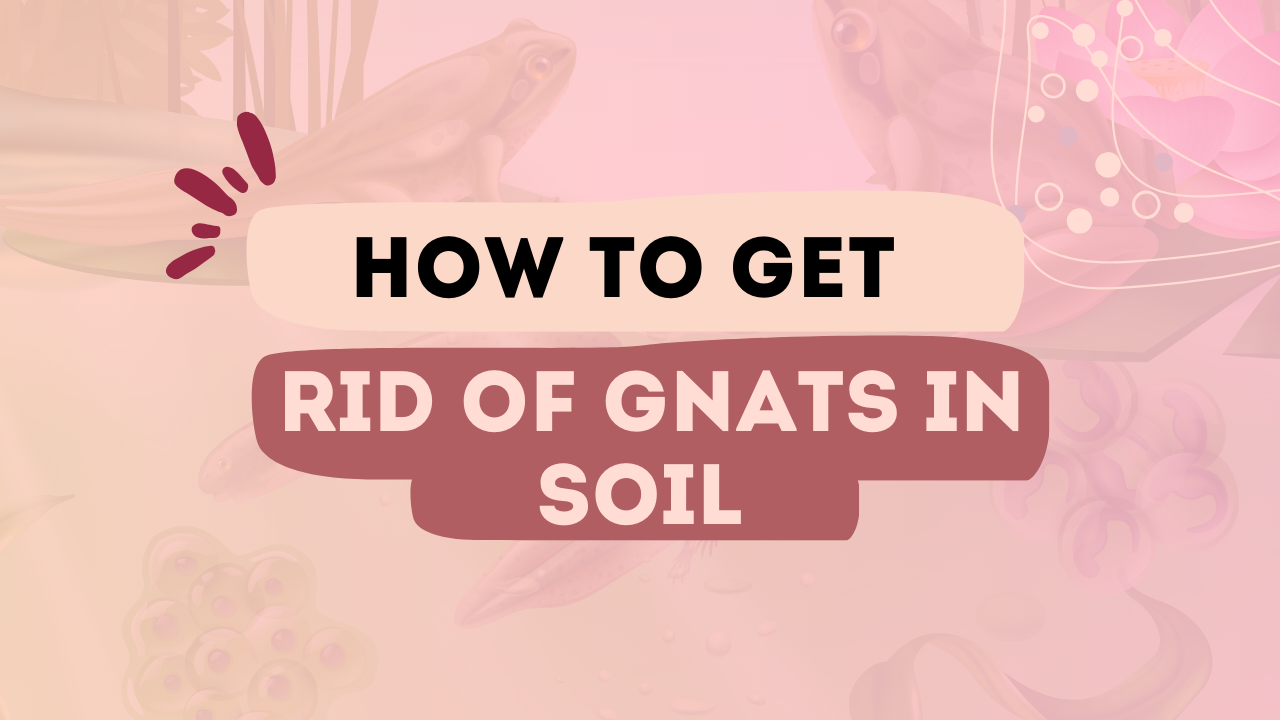Okay, so you’ve noticed tiny bugs buzzing around your beloved houseplants and now you’re googling how to get rid of gnats in soil like a mad scientist on a mission. Been there! Gnats—especially fungus gnats—are suuuper annoying.
They’re like that one houseguest who shows up uninvited and then decides to never leave. Worse? They love damp soil, and if you’ve been a little over-loving with your watering routine (don’t worry, we all do it), they’ll make themselves right at home.
Good news is, you can totally kick them out—with a mix of natural remedies, a little know-how, and some patience. In this guide, I’ll walk you through what works, what’s kinda meh, and how to stop them from ever coming back. Let’s dig in (pun fully intended).
Table of Contents
What Are Gnats and Why Are They in My Soil?
Alright, first off—what are these little jerks? Most likely, you’re dealing with fungus gnats. They look like tiny mosquitoes but don’t bite. They lay eggs in the moist top layer of soil, and their larvae munch on fungus and decaying organic matter (sometimes even plant roots—rude).
They thrive in:
- Overwatered soil
- Peat-based potting mixes
- Warm, humid environments
So basically, your cozy houseplant setup is their dream Airbnb.
Signs You Have a Gnat Problem
Gnats aren’t exactly shy, so spotting them isn’t too hard. Here are a few signs you’ve got a gnat infestation:
- Little black flies hovering around your plants
- Larvae (tiny white worm-like things) in the topsoil
- Slower plant growth (because larvae are eating roots—jerks again)
- Mushy or moldy-smelling soil
If you’re seeing one or more of these, it’s definitely time to evict the freeloaders.

How to Get Rid of Gnats in Soil – Step-by-Step
Alright, now let’s get to the juicy stuff. Here’s how to get rid of gnats in soil without totally overhauling your plant setup.
1. Let the Soil Dry Out
This is probably the easiest fix and often the most effective. Fungus gnat larvae need moist soil to survive. Dry soil = no baby gnats = population crash.
- Wait until the top 2 inches of soil are dry before watering.
- Use a moisture meter if you’re not sure (they’re cheap and handy).
- Avoid misting your plants too much—humidity encourages gnats.
2. Bottom Water Your Plants
Instead of watering from the top, try watering from the bottom. Just pop your plant pot in a shallow dish of water and let it soak up what it needs.
This keeps the topsoil dry, which the gnats hate.
3. Add a Layer of Sand or Gravel
This one’s kind of a weird trick, but it works. A layer of coarse sand or gravel on top of your soil acts as a barrier.
- It dries quickly
- Gnats can’t lay eggs through it
- Bonus: it actually looks kinda pretty!
4. Use Sticky Traps
Okay, they’re not glamorous, but those yellow sticky traps work like magic.
- Place them near or in the soil
- They’ll catch the flying adults
- This helps reduce the breeding cycle
You can get ‘em online or at any garden center. And yes, they’re gross when full, but also kind of satisfying?
5. Neem Oil Spray (Organic & Effective)
Neem oil is basically the holy grail of pest control. Mix it with water and a tiny bit of dish soap, then spray the soil surface and leaves.
- It kills larvae
- Repels adults
- And it’s safe for most plants
Just don’t overdo it—it can burn leaves if it’s too strong.
6. Hydrogen Peroxide Soil Soak
This sounds scary but it’s actually totally safe when diluted.
Mix:
- 1 part 3% hydrogen peroxide
- 4 parts water
Pour it over the soil like you’re watering your plant. It fizzes (kinda fun) and kills larvae on contact.
Only do this once every couple of weeks—not with every watering!
Preventing Future Infestations
Once you’ve kicked the gnats out, you’ll want to make sure they don’t RSVP again. Here’s how:
- Don’t overwater. Seriously. If you take one thing away from this article, let it be that.
- Use well-draining potting soil.
- Avoid leaving old leaves or debris on the soil surface.
- Quarantine new plants before introducing them to your plant fam.
A clean, dry topsoil is your best defense.
What Not to Do (Mistakes I’ve Made So You Don’t Have To)
- Don’t spray random bug killers on your plants. Some of them are way too harsh.
- Don’t repot every single plant right away—sometimes drying out the soil is enough.
- Don’t ignore the problem hoping it’ll go away on its own. It won’t. Trust me.
Final Thoughts
Learning how to get rid of gnats in soil is just part of the plant parent journey. Don’t beat yourself up if they show up—it doesn’t mean you’re a bad plant parent! (Honestly, it kinda means you care a lot, maybe too much.)
With a few simple changes and a little patience, your soil will be gnat-free in no time. Happy planting—and may your leaves be green and your soil be bug-free!

